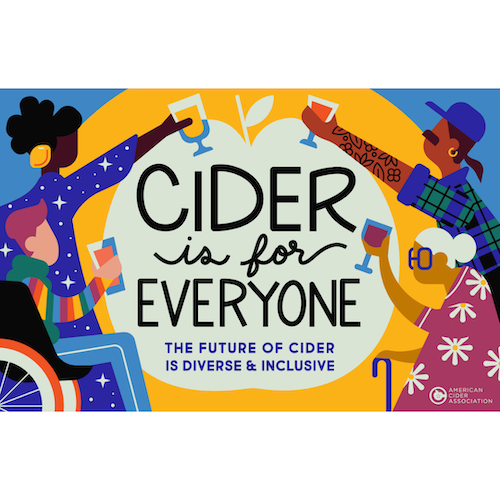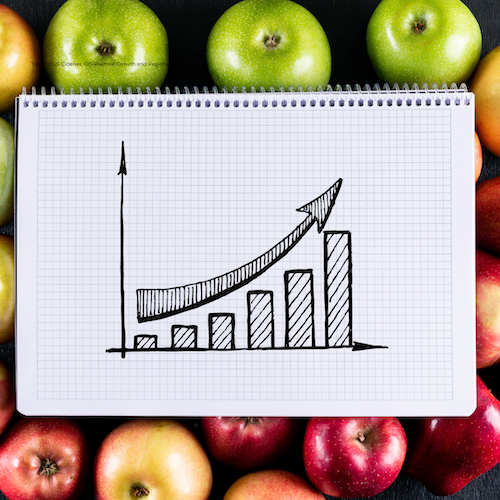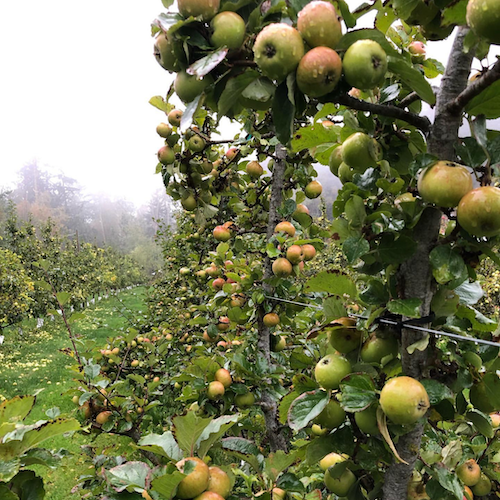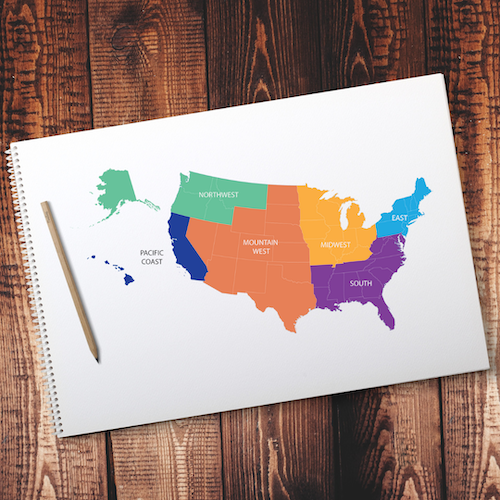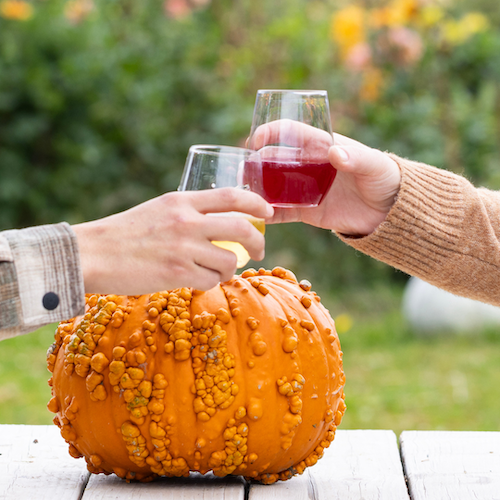Posts Tagged ‘instalink’
ACA Announces Cider is for Everyone Scholarship Recipients
PORTLAND (December 29, 2023) – The American Cider Association (ACA) is thrilled to announce the awardees of the 2024 Cider is for Everyone Scholarship. Recipients are Genevieve Regalado (Benny Boy Brewing), Robert Freeman (EsoTerra Ciderworks), Britt Evans, Javier Naranjo (Oklawaha Brewing Company), Tasmine Fraser (Girl with a Cider Review, Cider Canada), Rae Adams (Wehrloom Honey & Meadery), Emily Ptasinski (Republic of Cider), WIlliam Santiago (Crafted Concoctions), Jonathan Osei (Artisanal Brewing Ventures), and José Sabas (Grape Ape). Full recipient bios can be found below.
This scholarship is designed to bring individuals from historically marginalized populations within the beverage industry to CiderCon® to increase the accessibility of cider education and catalyze the careers and ownership-pathways of these burgeoning cider professionals. Now in its third year, the scholarship received almost four times the number of applications than in the previous two years combined.
Each scholarship includes registration, travel and lodging to attend CiderCon® 2024 in Portland, Oregon. Additionally, scholarship recipients receive a year of ACA membership and study materials and waived exam fees to pursue recognition through the Certified Cider Professional and Certified Pommelier™ education and certification program offered by the ACA. The ACA is grateful for support from Yonder Cider, Seattle Cider Co, Nine Pin Ciderworks, 2 Towns Ciderhouse, Alma Cider, the Great Little Box Company, John’s Marketplace, Beer Kulture and Lifting Lucy to make the Cider is for Everyone Scholarship possible.
This scholarship is part of a broader effort by the ACA to advocate for diversity, equity, and inclusion within the cider industry. In 2019 the ACA launched the Antiracism, Equity and Inclusion Committee, which recognizes diversity, equity and inclusion as important and necessary principles for the present and future successes of the cider industry. This committee structures its work around a belief that existing structures of power, privilege and discrimination must be actively questioned, evaluated and reformed in order to create equitable opportunities and foster an environment that embraces and values our differences. Its members, in conjunction with the rest of the organization, strive to create events, opportunities and organizational policies that embody these principles, and work to continue evaluating these practices for sustained growth and improvement.
“This scholarship is one of our best tools for fostering a more diverse cider industry,” says Michelle McGrath, CEO of the ACA. “The scholarship needs to work in lock step with our efforts to create a more inclusive industry so that, as we have more diverse CiderCon® attendees, they are surrounded by a welcoming community and equitable environment.”
“There is a stark difference between being invited to an event and actually belonging in a space. The American Cider Association is doing the difficult and meaningful work of building a culture within the organization and the industry at-large that fosters true belonging by challenging itself to thoughtfully and carefully evolve and expand. The rapid growth and development of this scholarship program is both a testament to that thoughtfulness and indicative of the program’s importance. Its transformative impact on the lives of not just the individuals who receive it, but also the industry professionals who interact with recipients, spans far beyond the CiderCon® experience. This program, its participants, its sponsors, and its supporters collectively demonstrate that cider is, indeed, for everyone,” says ACA Scholarship Coordinator Olivia Pener, a recipient of the scholarship in 2023.
CiderCon® is the world’s premier networking and educational event for the professional cidermaking community. CiderCon® 2024 will take place in Portland, Oregon from January 17-19 at the Oregon Convention Center. Registration is now open and available at https://ciderassociation.org/cidercon2024.
Further information, media interviews, awardee bios and photos available upon request. Please contact Michelle McGrath at michelle@ciderassociation.org. Interested in helping support the Cider is for Everyone Scholarship? Please contact our Scholarship Coordinator Olivia Pener at scholarship@ciderassociation.org.
Meet Our Scholarship Recipients

Britt Evans
Britt Evans is a proud West Philadelphian who started her journey in the city’s bustling food and beverage industry in 2010. In 2015, Britt developed a love for craft beer which led to a brewing position with Love City in 2021, making her one of the first Black Women to brew professionally in the city of Philadelphia. In the summer of 2023, Britt joined a collaboration with Farmer Jawn and Ploughman Cider, creating the successful “Uptown Cookout” blend for Barrel & Flow Fest. Now open to the beautiful world of apples and cidermaking, Britt is excited for the next phase in her journey. She hopes to explore the world and collaborate with fellow brewers/cidermakers, continuing to open doors and create safe spaces for Black Women in fermentation.

Emily Ptasinski
Hailing from the vibrant island of Taiwan, Emily Ptasinski has carved a unique path in the world of craft beverages as the co-owner and tasting room manager of Republic of Cider. Alongside her husband, they laid the foundation for their cidery in 2018, driven by a passion for redefining the boundaries of cider craftsmanship. Emily’s dedication to reshaping cider culture is reflected in her belief that inclusivity not only enriches flavors but also strengthens the very essence of craft beverages. To that, Emily has helped incorporate the distinct flavors of the Asian palate into their portfolio of ciders, even crafting her own Taiwanese plum wine, based on her own mother’s recipe. Embracing the significance of diversity, she champions the integration of varied perspectives and cultures into the fabric of craft beverages. Recognizing the pivotal role of representation, Emily actively promotes cider within the Taiwanese community, aiming to bridge cultural gaps and foster a sense of belonging.
Emily Ptasinski來自充滿活力的臺灣島,
作為蘋果酒共和國的老板娘和品酒室經理,她在手工飲料領域開闢了一條獨特的道路。 在重新定義蘋果酒工藝界限的激情驅使下,他們與她的丈夫一起在2018成立了,蘋果酒聯合國公司。 Emily致力於重塑蘋果酒文化,這反映在她的信念中,即包容性不僅能豐富風味,還能強化精釀飲料的精髓。 對此,Emily幫助將亞洲味覺的獨特風味納入了他們的蘋果酒組合,甚至根據她母親的食譜製作了自己的臺灣李子酒。 她擁抱多樣性的重要性,倡導將不同的視角和文化融入手工飲料的結構中。 Emily了解獨特性的重要,特別在西雅圖臺灣社群積極推廣蘋果酒,旨在彌合文化差距,培養歸屬感。
Emily很高興被選為美國蘋果酒協會2024年蘋果酒大會的獎學金獲得者。

Genevieve Regalado
Genevieve Regalado, the General Manager at Benny Boy Brewing in Los Angeles, CA, found her passion for cider kindled by the unique balance of dryness and sweetness in Benny Boy’s offerings. This pleasant surprise, given her background in the craft beer industry, not only sparked her creativity in imagining new flavor combinations but also inspired her to delve deeper into the world of cider. Motivated by her curiosity, she became the first on her team to pass the CCP 1 exam, thereby setting a precedent and guiding the development of a cider education program at Benny Boy. Currently, she is studying to pass her Certified Pommelier™ exam, demonstrating her commitment to continuous learning in her field. Genevieve is already infusing her creative ideas for new flavor profiles, featuring indigenous fruits and plants, into the team’s work. These ideas hold the potential to inspire new blends with Benny Boy’s beloved Pippin apple cider. As a proud member of the Latino community, she is weaving elements of her heritage into Benny Boy’s offerings and programming, fostering a broader appreciation for cider among diverse audiences.
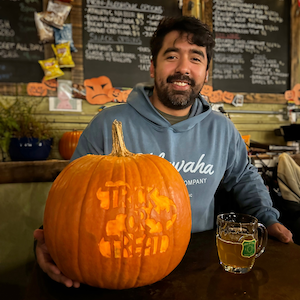
Javier Naranjo
Javier Naranjo, a seasoned fermentation professional with a BS in Chemistry, began his journey at Flat Rock Cider Company, refining his craft for two transformative years. Transitioning to Oklawaha Brewing Company, where he currently serves as a Brewer, Javier has been part of a dedicated team that achieved notable success. Together, the team has secured prestigious medals from the North Carolina Brewers Guild and the U.S. Open Beer Championship, contributing to the elevated recognition of Hendersonville, NC’s burgeoning brewing scene.

Jonathan A. Osei
Jonathan A. Osei, Manager of Solutions Design & Delivery at Jobs For the Future, blends his Arizona roots and Ghanaian-Black Southern heritage to fuel his passion for community work and craft beverages. His journey in the nonprofit social impact space is intertwined with his love for diverse cultures and flavors.
While studying at Duke University, Jonathan’s interest in the craft beverage scene blossomed, with Durham introducing him to a variety of craft drinks that broadened his palate. This experience sparked a particular fondness for cider, beginning with Bold Rock Cider and later, Bull City Ciderworks.
In Washington, D.C., Jonathan’s enthusiasm led to his role as a DC Brand Ambassador for Artisanal Brewing Ventures, sharing exceptional craft beverages. He is committed to diversifying the craft beer and cider industry, actively promoting local Black brewers through the Black Brew Movement and fostering inclusivity and collaboration. Jonathan’s goal is to enrich the craft beverage culture with diverse flavors and perspectives, bringing people together to enjoy unique and delightful beverages.

José Sabas
José Sabas orginally hails from Coachella, California. He is currently the chef at Grape Ape, a natural wine bar in Portland, Oregon. José just recently started his journey in cidermaking and is focused on low intervention and co-fermentations, using only produce from the Pacific Northwest.

Rae Adams
Rae Adams, from Chicago, IL, moved to Western North Carolina in hopes to work with a farm futuristic enough to be using traditional farming technology without harmful chemicals and pesticides. Entering the professional world directly from a Liberal Arts program, with a concentration in Physics, was an exciting leap into the corporate hustle but was not the card best suited. She has since been a strong part of the Customer Service and Entertainment industries, including management teams of bars, music venues and restaurants in Chicago and Western North Carolina. Currently, Rae is the Director of Sales for Wehrloom Honey & Meadery in Graham County, Robbinsville, NC. The Wehrloom team philosophy is that no one holds any one title; they’re all Beekeepers, Mead Makers, and Packaging and Sales Specialists: Aron, Garret, Ted, Jessica, Gayle, Abby and Anna. Working at Wehrloom is more than a profession, it’s a passion.
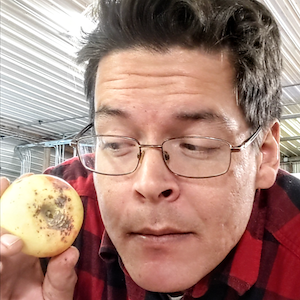
Robert Freeman
When Robert Freeman was 18 he got a tattoo on his arm that has an apple in an eye, to signify a promise to himself to always proceed with intention and chosen purpose. All his intents and purposes have led him here. Nowadays, all he sees are apples. He is passionate about the potential and the future of apples and the cider industry in America. Robert currently works at EsoTerra Ciderworks. Getting this opportunity to go to CiderCon®, to become a member of the ACA, and to have the chance to become a Certified Pommelier™ – is a literal dream come true for Robert.
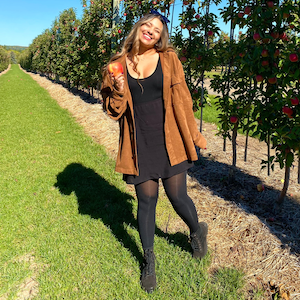
Tasmine Fraser
Tas Fraser is a Canadian cider enthusiast and social media content creator located in the Niagara region of Ontario, Canada. She is the founder of @girlwithaciderreview on Instagram where she shares her reviews of ciders from around the world. She started her Instagram in 2018 and has since developed many exciting projects. Throughout the pandemic, she created the IGTV show #ciderandlife to showcase local and global cideries making an impact in their communities. In 2021, she launched #noappleogies project to empower and highlight the work of women in cider and tackle issues of sexism and racism in the industry. The movement was intentional, reaching many corners of the world and generating conversation via podcasts, articles, and social media, and including some educational workshops on creating safe spaces in the beverage industry. Tas is currently a part of the CiderScene team and a member of the Cider Canada Board of Directors (and member of the Equity Committee). Outside of cider, she is pursuing her Masters in Social work, and working in the field doing preventative work and supporting survivors of gender-based violence.

William Santiago
Born in Puerto Rico, William Santiago is an award winning bartender currently working at Crafted Concoctions in Tavares, Florida. He has more than 10 years experience in the beverage alcohol industry. He is WSET certified in both Wine and Spirits level 2, a cocktail educator, and a spirit and cider enthusiast.
CiderCon® 2024 Aims to Tell Cider’s Story
Orchardists and Cidermakers Take Center Stage for Keynote Lineup
Portland, OR (December 14, 2023) – The American Cider Association (ACA) has announced the keynote speaker lineup for CiderCon® 2024, sharing that apple growers and cider producers will deliver opening remarks for the global industry event. This year’s theme, Connecting to Consumers in an Age of Endless Choice, will highlight the important and historic agricultural roots of cider in the US, and around the world.
“Our aim for the opening session is to celebrate American apple growers as integral members of the US cider supply chain,” says Michelle McGrath, the ACA’s CEO. “Storytelling is increasingly important in today’s consumer packaged goods industry, and cider’s story is deeply rooted in agriculture. The growers are critical to our industry.”
CiderCon® is the world’s largest professional hard cider conference, and the event welcomes cidermakers, apple growers, and beverage professionals worldwide to gather in Portland, Oregon, from January 17-19, 2024.
To kick-off the event, multigenerational orchardists Kaitlyn Thornton (Tonasket, Washington) and Randy Kiyokawa (Hood River, Oregon), along with cidery owner Lara Worm (Bivouac Cider in San Diego, California), will dig deeper into the theme for this year’s CiderCon®: Connecting to Consumers in an Age of Endless Choice. Following these three mini-presentations, Zoe Licata of Brewbound will host a panel discussion investigating the state of the hard cider industry with a selection of cidery representatives from around the country: Aaron Sarnoff-Wood (2 Towns Ciderhouse, Oregon), Eleanor Leger (Eden Specialty Ciders, Vermont), Caitlin Braam (Yonder Cider, Washington), Shannon Edgar (Stormalong Cider, Massachusetts), and Casey Baxter (Blake’s Cider, Michigan). McGrath will contribute remarks as well.
The ACA hopes to inspire attendees to hold deeper conversations with fellow conference-goers about how cider can reach new consumers in today’s beverage alcohol environment.
Over three days, CiderCon® attendees can choose from 40 educational sessions about cidermaking and cider business, attend a specialty trade show with over 120 vendors, and sample cider from around the country and the world at the opening reception, called Cider Share.
“We’re really excited to host the cider industry in Portland. We know the regional beauty, phenomenal food and plethora of cideries will be remembered by visitors when CiderCon® is over,” says McGrath. “Oregon is true cider country!”
Tickets for CiderCon® are still available through www.ciderassociation.org with discounted tickets offered to ACA members. The ACA reports that registration is outpacing all prior years, and they anticipate they will declare the event sold out in early January. The ACA is a 501C(6) nonprofit dedicated to supporting and protecting the U.S. hard cider industry.
###
Kait Thornton
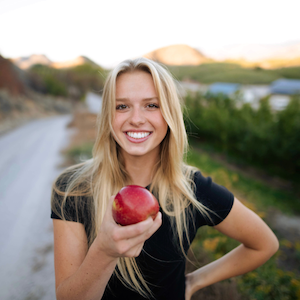
Kait Thornton is a 4th generation orchardist from North Central Washington. She shares her passion for the ins and outs of farm life & how apples/pears are grown to her over 450,000 followers on TikTok. She recently graduated from Washington State University and is on a mission to connect consumers to the food her family produces. You can find her on Tik Tok and Instagram.
Randy Kiyokawa
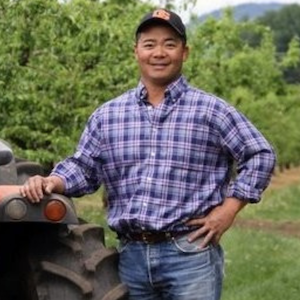
Randy Kiyokawa is a third-generation orchardist from Parkdale, Oregon, whose grandfather emigrated from Japan in 1905, and through hard work started farming in Hood River in 1911. After college Randy returned to the family orchard of more than 200 acres. While weathering many challenges, in 1989 Randy removed three acres of 80-year-old pear trees and planted 28 varieties of apples. Over time, customers requested different varieties that could not be found in stores or farmers markets, which has led to his offering now of over 120 varieties of apples. Randy’s diversification efforts expanded to Farmers Markets and direct sales to stores, restaurants, bakeries, schools and CSAs. Randy also credits his 45+ employees – many of whom have been with him for over 25 years — with the high-quality fruit for which Kiyokawa Family Orchards is known. You can follow Kiyokawa Family Orchards on Instagram.
Lara Worm

Lara Worm, co-founder, CEO, and self-described “Adventure Guide” of Bivouac Ciderworks, has taken an untraditional path to cider. The trial lawyer turned craft beverage entrepreneur who grew up in a multi-generational family restaurant business knows that there are two components to every great product: the ingredients and the story. Bivouac Ciderworks, established in 2017, was among the first commercial cideries in the craft-beer mecca of San Diego. Bivouac, telling their story through their active adventure lifestyle brand, set out to make approachable ciders that taste as great at the top of a mountain as they do with a fine meal. Bivouac’s brand, and North Park tasting room & restaurant has received great acclaim since its inception, earning recognition as one of U.S.A. Today’s “10 Best Cideries,” San Diego Magazine’s “best new brewery,” (before there was a cider category), and “Best ‘Alt-Drink’” (still, no cider category). Most recently, Lara was recognized as a “Food & Beverage Pioneer,” in San Diego, for her work introducing a wider audience to the possibilities in craft cider. In early 2024, Bivouac will open it’s newest concept, the “Adventure Lodge,” with a grand cider tasting bar and market featuring the finest cider from America and around the world. There, guests can enjoy a curated cider tasting program that leans in to the history, education, apple varietals and regions, and tasting notes found in cider. Lara says “cider is as approachable as beer, but as nuanced as wine,” and she intends to prove it. Follow Lara on Instagram.
Coffee Chat with 3 Tier Beverages
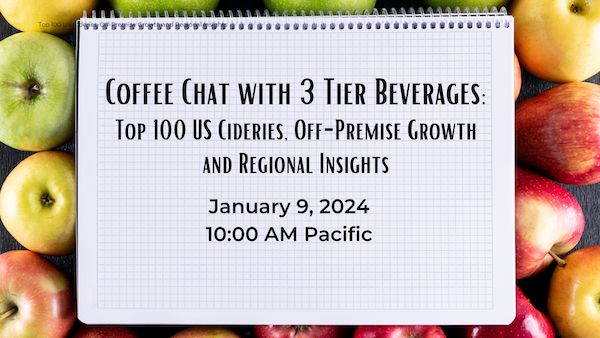
Are you curious about the latest trends in the cider industry? Join us for a members-only Coffee Chat webinar on January 9, 2024, at 10:00 AM Pacific Time, where Mary Mills and Julia Lechleiter from 3 Tier Beverages will share insights on 2023 chainr retail cider sales and consumer behavior.
The duo will provide a comprehensive analysis of the top 100 US cideries, off-premise growth, and regional insights based on data from NielsenIQ. With their expertise in the beverage industry, Mary and Julia will identify the drivers of growth and highlight emerging trends in the cider market at the chain retail level.
But the conversation doesn’t end there! Continue the discussion with 3 Tier Beverages at CiderCon® 2024 on Thursday, January 18 at 10:30 AM. This session will be co-led with our partners at CGA, a leader in on-premise data, and 3 Tier Beverages, a BevAl focused consultancy.
Don’t miss out on this exclusive opportunity to learn from industry experts and gain insights that can help your business thrive in the cider market. Register now for the Coffee Chat webinar and CiderCon® 2024 to stay ahead of the curve.
Certified Pommelier™ Ceremony at CiderCon® 2024
We are thrilled to share that the American Cider Association is hosting the inaugural Certified Pommelier™ Ceremony at CiderCon® 2024 in Portland, Oregon. This isn’t just any ceremony, it’s a celebration of achievements, a recognition of passion, and a toast to education.
Each and every Certified Pommelier™ brings their hard work, dedication, and cider expertise to the table. Their journey deserves to be celebrated, and what better place to do so than in the cider haven of Portland, Oregon.
So come join us at lunch on Thursday, January 18 at CiderCon® 2024 to raise a glass high to our Certified Pommeliers™ accomplishments and the beginning of a new chapter in cider education. Let’s toast to the future of cider and the continued success of our Certified Pommeliers™!
Interested in learning more about our Certified Cider Professional programs? Head to our Certification page.
CiderCon® 2024 Olympic Peninsula Tour

The Olympic Peninsula Tour will take you through some of the most breathtaking scenery in Washington State. While enjoying the stunning natural beauty, the rugged mountains, lush rainforests, pristine coastline and orchards, you will visit award winning cideries, an event space, a new cider education facility and spend the night at Fort Worden State Park. Led by Andrew Byers, head cidermaker and co-owner of Finnriver Farm & Cidery, we’ll taste our way across the Peninsula.
The Locations:
- Eaglemount Cider’s Palindrome – Eaglemount is located on 12 acres of mixed farm and woodlands known as Arcadia, just outside beautiful Port Townsend in Washington State. We’ll feast together and taste ciders in this historic barn.
- Alpenfire Cider – Shaped by the maritime climate’s mild summers and tempered by the foggy mist rolling off of Discovery Bay, Alpenfire Cider creates truly unique ciders from apples grown in their organic orchards. On the tour, we’ll visit both the cidery and orchard.
- Finnriver Farm & Cidery – Finnriver is an organic farm, orchard and craft cidery located along a salmon stream in the Chimacum Valley on the north Olympic Peninsula of Washington— the traditional and contemporary territories of the S’Klallam (Nəxʷsƛ̕áy̕əm̕) and the Chemakum (Aqokúlo or Čə́məq̓əm).
Craft Brewing & Distilling Center – Part of a community college, the Craft Brewing & Distilling Center (which also teaches cidermaking) exists to build flourishing, connected communities, entrepreneurs, educators, farmers, and cities are convening around growing the craft beer, cider, and spirits movement. Located just outside Olympia, Washington next to the historic Olympia Brewing Company, the tour will stop here to visit the classrooms and labs on our way up to the Peninsula. - Fort Worden Historical State Park – Fort Worden State Park and its gorgeous natural setting of Port Townsend is the kind of destination that stays with you forever. Originally designed as a military base to protect Puget Sound, Fort Worden has evolved into an iconic and cherished state park and lifelong learning center.
The tour will depart from the Hyatt Regency – Oregon Convention Center at 12:00 PM on Monday, January 15, 2024 and will return on Tuesday, January 16, 2024 at 6:00 PM. Dinner on Monday and breakfast and lunch on Tuesday will be provided, as well as accommodations at Fort Worden State Park in historic officers’ rooms, and cider tastings at Eaglemount Cidery, Alpenfire Cider, and Finnriver Farm & Cidery.
Cost: $295
If you’d like to join this tour, be sure to add it on during the registration process. The deadline to be included in this tour is December 11 so we have adequate time to book necessary accommodations.
Introducing Certified Pommelier™ Chapters

We were so excited to share the news of our 12 new Certified Pommeliers™ last week, but that’s not all we have to share; we’re not just about numbers (although they are fun) – we’re also about community, education, and advocacy. That’s why we’re also thrilled to announce the launch of the Certified Pommelier™ Chapters program.
Picture this: a network of educated cider enthusiasts spreading an understanding of the beverage across the globe. With leaders appointed in all six current ACA regions and Canada, the chapters are set to redefine the regional cider experience.
Meet Your Chapter Leaders:
- East: CT, MA,ME, PA, NH, NJ, NY, RI, VT- Paige Flori
- Midwest: IA,IL, IN, MI, MN, MO, OH, WI, KY- Sean Niemisto
- South: AL, AR, FL, GA, LA, MS, NC, SC, TN, VA, WV, MD, DE, DC- Josh Corl
- Mtn West: AZ, CO, NM, NV, UT, WY, SD, ND, KS, NE, OK, TX- Matthew Ostrander
- Northwest: OR, WA, ID, MT, AK- Storie Madrid
- Pacific Coast CA, HI- Brandon Buza
- Canada- Sara Boyd
How Do We Plan to Redefine the Regional Cider Experience?
- Community building: Our chapters, meetings and events will be more than just gatherings, they will help ignite a spark in the heart of local cider communities. Imagine sharing stories, clinking glasses, and forging friendships with like minded individuals who appreciate the art of cider. Chapters will play a pivotal role in nurturing these connections creating regional cider centric hubs.
- Education: Certified Pommelier™ chapters will be the epicenter of knowledge-sharing and skills development. From cider tastings to hands-on workshops, we hope to bring these educational events down to the local level and make them accessible for any cider lover.
- Advocacy: We’re not just sitting in the wings; we’re raising our glass high and advocating for the value of cider education. Certified Pommelier™ chapters will champion the industry in their respective regions aspiring to advance consumer understanding of the beverage and how it is made.
So, whether you’re a seasoned cider aficionado or just starting to dip your toes into the world of cider there’s a place for you in the Certified Cider Professional education community.
ACA Welcomes 12 New Certified Pommeliers™ After October Exams

The American Cider Association is proud to announce that twelve individuals successfully passed the Certified Pommelier™ examination in October 2023. The new Certified Pommeliers™ are Ann Bliss of Mullers Cider House, Bryan Barry, Christian Rodriguez, and Tom Hansen of Angry Orchard, Katie Black of DSSOLVR, Johnny Rice of Orchard Hill Cider Mill, Don Whitaker of Castle Hill Cider, Henry Johnson of Bold Rock Hard Cider, Chris Jackson of Treasury Cider at Fishkill Farms, Aaron Gore of Fresh Pitch Beverage Consulting, and cider enthusiasts Sabrina Nencetti and David Lindsey.
The rigorous exam, held in both New York and North Carolina last month, tested candidates on their understanding of cider production, history, and sensory evaluation. As a result, these newly Certified Pommeliers™ are now equipped with advanced skills to guide consumers through the wide variety of ciders available and to help elevate the cider industry at the point of sale.
Early on, the American Cider Association recognized the need to promote specialized knowledge about the cider category. Certifications are increasingly being used to set food and beverage professionals apart. However, most certification programs cover cider in a cursory manner or not at all. With cider being a beautifully nuanced beverage with a diverse set of elements often less understood by food and beverage professionals, the establishment of the Certified Cider Professional (CCP) program in 2016 was a strategic maneuver. Today, the CCP program is designed to educate those on the front-line of cider sales, making it the world’s most comprehensive and in-depth cider appreciation program for food and beverage professionals.
The CCP program begins with a Certified Cider Guide (CCG) Level 1 certification to help industry professionals develop a fundamental understanding of cider. The Certified Pommelier™ (CP) Level 2 takes it a step further by encouraging cider professionals to think critically and showcase a higher level of understanding of the elements of cider. The rigorous testing process consists of four types of questions, including short answer, fill in the blank, essay, and blind sensory–which is based on tasting.
The ACA is dedicated to ensuring that all information tested on the exam is made accessible to anyone who desires to learn. To that end, the ACA released a textbook in March of 2023 to help candidates prepare to take the exam with just one comprehensive resource. The textbook is available for purchase through Kindle Direct Publishing. Additionally, the ACA offers sensory analysis practice webinars and a Facebook study group, continuously updated with resources for exam candidates. Interested candidates can find links to all Certified Pommelier™ resources on the ACA’s website.
The next Certified Pommelier™ Exam will be held at CiderCon® 2024 in Portland, Oregon on January 17, 2024
Contact the ACA’s Education Operations Manager Jennie Dorsey if you have questions about the Certified Cider Professional program or are interested in taking either the Level 1 or Certified Pommelier™ exams. You can also learn more at https://ciderassociation.org/certification.
###
Check Out the Fun to be Had at the CiderCon® 2024 Trade Show!

The CiderCon® 2024 Trade Show, sponsored by FruitSmart is set to be the best yet! With over 100 vendors already confirmed and more on the way, there will be plenty of chances for you to connect with the companies that have helped your cidery thrive or meet new companies that can help take you to the next level. The CiderCon® Trade Show will be taking place at the Oregon Convention Center on January 18-19, 2024.
But wait, there’s more! Need a pick-me-up? Coffee will be available Thursday and Friday mornings, courtesy of Milne. And when Thursday afternoon rolls around, get ready to cheers with some cider at the Happy Hour sponsored by Hart Print.
But it’s not all about the drinks – there’s plenty of entertainment to go around. Check out the research poster presentations or get competitive with some games of corn hole and ping pong. And if you’re feeling nostalgic, Stern Pinball will have pinball machines available to play.
Now if you’re looking to make a statement, head over to the Ink Bus and get yourself an apple flash tattoo. It’s a fun and unique way to show your love for the fruit that brings us all together.
Don’t forget to stop by the ACA Bookstore to stock up on the latest cider book offerings and to meet our staff and board members. In addition, the TTB staff will be available for one-on-one questions, and folks from CINA will be on hand to provide feedback . With so much to see and do, and more on the way, the CiderCon® Trade Show is not to be missed!
Interested in becoming a CiderCon® vendor? Email our Trade Show Coordinator Ellen for more info!
Now Accepting Nominations for ACA Board of Directors

Do you have a passion for growing the cider industry? Are you looking to find a platform for your ideas, where you will be seen and heard? Would you like to work with a group of like-minded industry leaders to create positive change?
If you answered “Yes” to these questions, YOU ARE IN LUCK! The ACA is looking to fill two At Large seats on our Board of Directors. Our annual nomination window is now open, and we want to hear from YOU! Elections will take place electronically during CiderCon® 2024 in Portland, Oregon in January. All U.S. member cideries are eligible to vote (1 vote per cidery).
Although it is not required, we strongly encourage candidates to have an ACA volunteer history before running for office.
Please see below for more specifics on service and how to apply:
- Positions are open to any active ACA member cidery in the U.S., regardless of size.
- Applications are due by December 8, 2023.
- To qualify for candidacy, you must be a permanent employee of a bonded cidery, producing cider in the U.S.
- Incumbents may be running for their seats again.
- Terms are three years.
- Applicants will be reviewed when the submission window has closed
- Qualified candidates will receive further instructions on developing their platforms and what board service includes.
Have more questions about board service? Schedule a chat with ACA CEO Michelle McGrath by clicking here.
To submit your nomination by the December 8 deadline fill out the self-nomination form.
Cider Is For Everyone Scholarship Application Now Open!
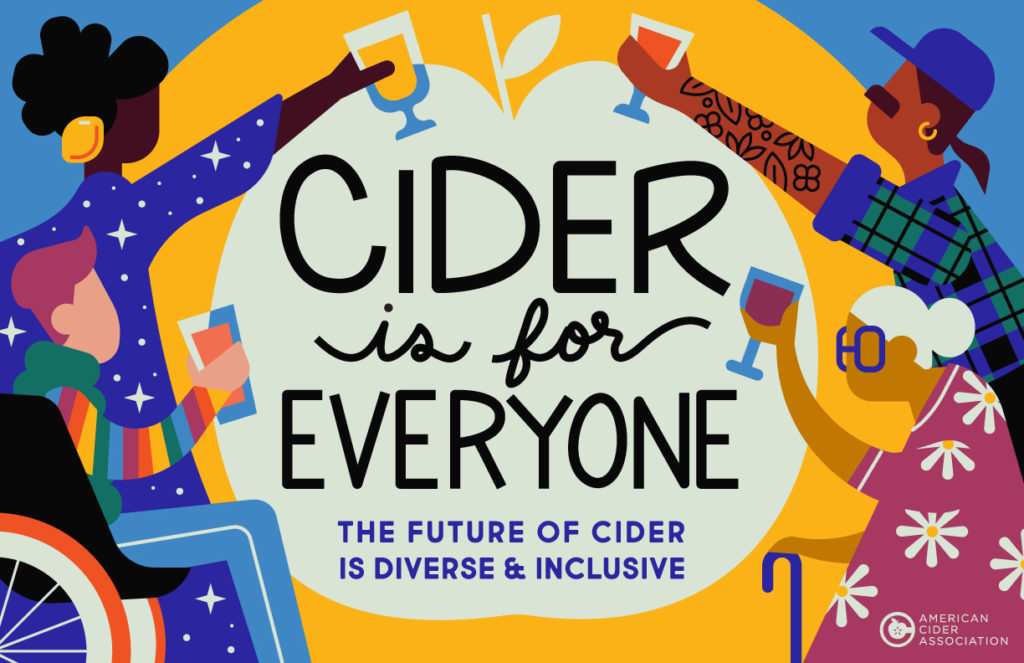
The American Cider Association is pleased to announce the continuation of their Cider Is For Everyone Scholarship program for CiderCon® 2024. This scholarship is designed to bring historically marginalized groups to CiderCon® to increase the accessibility of cider education and jump-start the careers and ownership-pathways of these cider professionals.
The scholarship package includes: registration to CiderCon® 2024 (including travel and lodging) and the entire suite of ACA’s Certified Cider Professional educational programming leading up to sitting for the Certified Pommelier™ exam (Level 1 CCP training and certification exam, two Certified Pommelier™sensory webinars; the Certified Pommelier™ study guide, and the registration fee for the Certified Pommelier™ Exam).
Applications are now being accepted and the deadline to apply is November 27. Those interested in applying can fill out the application form here. Recipients will be contacted to schedule a brief interview and winners of the scholarship will be notified by December 5. CiderCon® 2024 takes place January 16 – January 19, 2024 in Portland, Oregon
This scholarship is part of a broader effort by the ACA to advocate for diversity, equity, and inclusion for the cider industry. In 2019 the ACA launched the Antiracism, Equity and Inclusion committee which recognizes diversity, equity and inclusion as an important and necessary part of present and future successes of the cider industry. This committee structures its work around a belief that existing structures of power, privilege and discrimination must be actively questioned and evaluated in order to create equitable opportunities in an environment that embraces and values our differences. They strive to create events, opportunities and organizational policies that embody these values, and to continue evaluating these practices for sustained growth and improvement.
“This scholarship is one of our best tools for fostering a more diverse cider industry” says Michelle McGrath, CEO of the ACA. “The scholarship needs to work in lock step with our efforts to create a more inclusive industry so that, as we have more diverse CiderCon® attendees, they are surrounded by a welcoming community and equitable environment.”
Meet Our Scholarship Coordinator

Olivia Pener’s passion for food and drink, and the way they bring people together, was ignited as a small child whose large family always gathered over meals in the kitchen. That flame was stoked by her experiences growing up in her family’s restaurant and being surrounded by multicultural foodways in St. Louis, MO. Now, after almost 20 years in the service industry and the nonprofit world, she brings her fervor for people and palates to the American Cider Association as their “Cider is for Everyone” Scholarship Coordinator. A recipient of the scholarship herself, Olivia was welcomed into the world of cider with open arms. She is excited to contribute to the growth and evolution of the cider industry as a diverse, equitable, inclusive, and dynamic environment for all. She lives in Mid-Missouri with her two cats, Felix and Nermal, and her Chihuahua mix, Swiper.
Have questions about the scholarship? Reach out to Olivia with any questions you might have!

